art
now browsing by tag
Equity, Diversity, and Inclusion- Is Art the pathway to a Cultural Utopia?
This amazing blog entry is from the PAEA ED&I chair person, Lynette Brown
Equity, Diversity, and Inclusion- Is Art the pathway to a Cultural Utopia?
(The blog consists of excerpts from my personal teacher reflections, inquiries, and presentations.)
“A cultural utopia meaning that every student has a voice in the classroom, school community, and we all (educators, too) can learn about the world by seeing, listening, and connecting to one another, (especially our students).”
As a black woman of color and art educator, every February during Black History Month, I often witness the parade of culturally conscious history and art projects throughout schools and various communities. However, for me, it is a time to reflect and delve deeper into my authentic purpose as a woman of color, artist, and art educator.
Reflections
In 2006, after spending ten years at one of the more challenging public schools in Germantown (Northwest Philadelphia) where school reform, No Child Left Behind, high stake testing and A.Y.P. (adequate yearly progress) were the only motivation for many, except students. My position as the art teacher, the last art teacher was cut as a result of the tumultuous test-driven environment. I was the last “advocate for the arts” and ambassador standing and gone were all of the art programs that once served over 1000 students. Never again at Pickett Middle School would the students paint Afro-centric murals on its walls, perform traditional African dance to the calls, sounds, and beats of distant African tribes, participate in the great theatrical performances like “Purlie” led by Mrs. Pollard and Mrs. Parkinson Hall, and the choir now silent had long sung its final gospel hymn. As the building decayed -so did the arts and its relevance as a new order of education took shape and rose in the city of Philadelphia.
I left a school that used only half of the building and a class filled with supplies and students who soared when being creative. I quickly recovered despite not knowing if the students I left behind did. I took up residency at Alternative Middle Years at James Martin (A.M.Y.) school. A.M.Y. is located in the Port Richmond section of Philadelphia and is quite a different neighborhood from Germantown, historically and culturally.
The opportunity to teach and connect with students from diverse cultures would be a new challenge and opportunity for me to grow and learn as a teacher. My excitement in the weeks leading up to September was un-containable. During my first months of teaching at A.M.Y., I enjoyed watching the social interaction of students and multicultural friendships. I can recall one late October afternoon during the occasional school social, a colleague shared the following statement, “I don’t care what happens out in the real world, I like that we have a perfect cultural utopia here at AMY.” That verbal exchange resonated with me and in me for quite a while. I now began to experience a new level of discontentment. Isn’t A.M.Y -the real world? What made A.M.Y. a cultural utopia? Where are the programs and messages that foster that cultural utopia? What did A.M.Y. have that was not present in the outside world-the real world? Does the school staff model this cultural utopia? Was my colleague seeing the whole picture? Am I missing the picture?
As time progressed the observed multicultural friendships were not enough. I questioned, looked deeper and found that the multicultural message of a perfect cultural utopia was somewhat superficial. The only “authentic” effort to learn about the world by seeing, listening, and connecting to others was being driven by the students in the halls, in the schoolyard before school, and during the lunch period. The diverse student population was only the beginning. Were we (the school staff) doing enough? Where was the share fair day at AMY, which started as a cultural exchange celebration? How could we offer our students a place and voice in the school community? Where was my place and role in regard to the students in this perfect cultural utopia? Can a cultural utopia ever exist?
In the past, I believe that designing lessons that featured the backgrounds or highlighted the history of students represented in my classroom was enough to promote student voice in the classroom. It was my way of promoting equity in the classroom to others from different cultures or ethnic backgrounds. However, through my reflection, I learned that I was presenting student identity from my perspective; it was more of my teacher voice and intent. In response to the on-sought and parade of questions, I began to include more even more culturally relevant classes on my roster and provided students with collaborative projects featuring art from many cultures and lands from a first-person perspective. I once again, as I re-framed my practice to help create a sense of “a cultural utopia”; I embarked on a journey of inquiry using visual journal projects. As I tried new things to teach authentically and created more space for students in the classroom, I began to learn the importance of student voice and it’s affect in the classroom and learning.
My Inquiry Questions
“What occurs when visual journals are used as social commentary for expressing student identity within the school?”
- Can the journaling process create a space for student culture and voice inside the classroom?
- How can I promote more authenticity and originality in student response in their journaling?
- Can exploring identity issues through art journals in the classroom lead to increased student engagement and self- esteem?
- Will the inquiry in my class elicit the type of expression needed for me to learn about who my students really are?
- What is my role in fostering a safe environment to create personal art and expression?
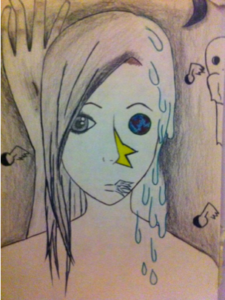
As Mark Berger states in the Culture of Quality chapter in Going Public… “…Elements that have nothing to do with curriculum have the most profound effect on the lives of children… These things are every bit as important as the curriculum.” How can we allow our students voices of identity into the school and class dialogue?
Visual Journal Project Overview
Sampling of Visual Journal Lessons:
- I Am, I Am Not T-shirts
- The Power of Words Illustrations
- Self Portrait with I Am Poem
Through the visual journal project, my students addressed themes such as bullying, prejudices, gender roles in their family, in their culture and the United States, along with the other concerns and issues that adolescents face from other parts of the world. The students discussed their journal projects (visual drawings, interviews, photographs, poetry, narrative writing, research information, etc.) and displayed the art in a final project exhibition for the school-wide community to view.
The purpose of journaling is to record, reflect, or envision, problem-solve, and purge. For years, I have used journals to transition, settle students down, begin a lesson, assess student learning and development, offer an opportunity for students to make mistakes, provide reflection, and deep thought. As years passed, journaling evolved into a larger role in my instruction, teaching, and student learning. I have unexpectedly learned so much about my students’ outside life and thoughts through journals. Often, through student journals that I have had a glimpse into my students’ true identities.
My Conclusions
Students serve as the best authorities on telling their stories. So often, others speak to and for students and make assumptions on what the students’ realities and communities are like to the larger world. As an educator, I learn best from my students firsthand. A cultural utopia meaning that every student has a voice in the classroom, school community, and we all (educators too) can learn about the world by seeing, listening, and connecting to one another, (especially our students). In this cultural utopia, there is respect for learning about the world and one another’s world through inquiry. Seeing our students’ cultural capital allows for valuable learning experiences in the art room and work towards promoting inclusion. This is a way of understanding our students come to our art classrooms with a plethora of valid and valuable experiences, traditions, and knowledge. As every September and February approaches, I once again have recaptured that un-containable excitement knowing that a culturally relevant classroom driven by my diverse student population can move A.M.Y. closer to a cultural utopia.
By Lynette Doreen Brown
Art Teacher, Philadelphia School District
M.ED, N.B.C.T.,
Equity, P.A.E.A. Diversity, and Inclusion Committee, Chairperson
Anew Coming into View
Blog Post by:
Carrie Nordlund, PhD
Kutztown University of Pennsylvania
Another year is coming into view and we too are ceaselessly in a state of becoming (Unrath & Nordlund, 2009). The term epiphany is a Greek derivative meaning to come into view (McDonald, 2008). Some new year’s resolutions come into view from epiphanies, profound illuminations of experiences with subsequent and emergent crystalizing moments of self-identity (Nordlund, 2019). As we usher in a new year, we can revisit the crystalizing moments we have cherished and open ourselves to what may come further into view. We may also recall challenges as we attribute meaning to the past year, those paralyzing moments of the past. Yet, these too offer us opportunities to recommit our efforts in becoming our best selves. The new year brings into view potentiality, to become anew.
The new year can pose uncertainty. One way to take in hand the feelings associated with uncertainty is to start to recognize epiphanies, with their consequential understandings of our deeply held certainties and feelings about self and the world, often ensue after periods of inner turmoil including states of anxiety and depression (Denzen, 1989, 1990; Jensen, 1999; McDonald, 2008; Miller, W.R. & C’de Baca, 2001; Pyne, 2014). Jarvis (1997) defined epiphany as “sudden discontinuous change, leading to profound, positive, and enduring transformation through reconfiguration of an individual’s most deeply held beliefs about self and the world” (p. v). When we are called to deeply feel and consider, we have reconfiguration available to us to see and be anew.
How might we arrive at reconfiguration in the new year? To follow, I offer some strategies affording reflection and reconfiguration. In the past, I have facilitated these three strategies for and with K-12 students, preservice art educators and myself via action research aimed at working on being the best self I can be.
My Personal Art History
The first strategy, “My Personal Art History”, offers a means to consider how might we better recognize our relationship with art and if necessary, reconfigure our aesthetic code during the new year.
Carrie Miller, Artist Educator, North Schuylkill Elementary School
Identities are constructed artifacts. We tend to teach from what we know. Our past experiences with art and art education partly construct our present and future beliefs about art and art pedagogy. What journey brought you to the creating artist and becoming teacher you are today? What is your personal art story?
Reflect on your child and adult art story, aesthetic experiences of the past and blossoming abilities in and with art. Visually describe any crystallizing and paralyzing moments during your explorations with art. Recreate in a timeline of visual expressions and metaphors of this art history starting from your earliest memories to now, 2020. The timeline leads to you to defining a future aesthetic code.
Postcard Moments
The second strategy, “Postcard Moments”, offers a means to consider sudden, turning point moments of epiphanies that provoke transformation of our conventions (Miller & C’de Baca, 2001; Nordlund 2019; Unrath & Nordlund, 2009).
Amanda Madea, Community School Coordinator, Bethlehem School District
Postcard Moments are small postcard-sized expressions created at self-determined key moments. The visual metaphors express a moment of sudden enlightenment—an epiphany—accompanied by written narrative about the personal “aha” and journey to it. The small postcard format serves as a compact, portable, and focused place where these such reflections are actualized, just as a traveler might choose which external event or experience from a trip is significant enough to write home.
Postcard Moments can become a larger culminating artifact by juxtaposing and synthesizing individual epiphanal works from the journey (e.g. journey book, travel game, visual mapping, digital film, photomontage,…). “Ahas” along the way or during the journey, lead to enduring understandings relevant to the traveler’s transformation or the potentiality of transformation and are characterized by traveler’s comprehension of the intimately interconnected parts of something complex. Postcard Moments often provide acute awareness of vistas previously unseen (Nordlund, 2019).
Personal Improvement Plan
The third strategy, “Personal Improvement Plan”*, offers a means to design an action plan in the new year targeting a specific goal to become one’s best self.
Carrie Nordlund, Associate Professor of Art Education, Kutztown University of Pennsylvania
Visual Artifact from Steiner’s Six Steps in Self-development Exercises
What threatens or impedes you from being your best self? To engage in a Personal Improvement Plan (PIP), take on a self-designed project that helps you become your best self over the new year. Intentionally choose a condition or disposition that is lesser and needs to be made more significant, positive, and enduring by ascribing personal meaning to it through a plan of improvement. Allow yourself to be vulnerable to create a SMART (specific, measurable, achievable, relevant and time-based) goal as the core of your improvement plan.
My PIP goal typically starts as a wondering, such as “What might occur when I devotedly practice mindfulness exercises directed at educators?” To answer this question, my PIP plan entailed an autoethnography study over six months where I sequentially employed and maintained Rudolf Steiner’s (1910/2011) Six Steps in Self-development: The Supplementary Exercises for Teachers by implementing one exercise each month until all six were engaged in the sixth month. I discovered and described in narratives the deep meaning or essence of experiencing the phenomena of Steiner’s six supplemental exercises entitled (1) control of thoughts; (2) initiative of will; (3) equanimity; (4) positivity; (5) open-mindedness; and (6) equilibrium. The outcome narratives explicated the phenomena under investigation and became a means for intervention, i.e., action research on my own practices and state of being.
When you employ a Personal Improvement Plan consider weekly documentation of your progress, including dates and times, pictures, successes, failures, outcomes, notes, wonderings, insights, and implications. Feelings of doubt, immobility, or disconfirmation can be or lead to breakthroughs. Personal improvement plans can either target our individual best selves, or on a macro level, us as change agents for a global best self.
*The “Personal Improvement Plan” was created and championed by Dr. Peg Speirs, Kutztown University of Pennsylvania.
References
Jensen, K. L. (1999). Lesbian epiphanies: Women coming out later in life. Harrington Park Press, New York.
McDonald, M. G. (2008). The nature of epiphanic experience. Journal of Humanistic Psychology, 48(1), 89–115.
Miller, W.R. & C’de Baca, J. (2001). Quantum change: When epiphanies and sudden insights transform ordinary lives. Guilford, New York.
Nordlund, C. (2019). Letters to colleagues: A community of practice for navigating and reshaping identity. In Daichendt (Ed.), Visual Inquiry: Learning and Teaching Art, 8(1), 49–62.
Pyne, S. (2014). The role of experience in the iterative development of the Lake Huron treaty atlas. In Fraser Taylor, D.R. (Ed.), Developments in the Theory and Practice of Cybercartography: Applications and Indigenous Mapping, 2nd Edition (pp. 245 -259). Oxford, UK: Elsevier Science.
Steiner, R. (2011). Six steps in self-development: The supplementary exercise. Rudolf Steiner Press.
Unrath, K. & Nordlund, C. (2009). Postcard moments: Significant moments in teaching art”. In Dhillon, P. (Ed.), Visual Arts Research, 35(1), 91–105.
How Many More School Days Until Summer??
by Jessica Alesso
Oh, the holidays. A great time of excitement, joy, and revelry for most, paired with a bit of stress, busyness and travel, too much food and drink, and perhaps not as relaxing as we all had hoped. BUT, we as teachers crave this mid-year break, right? We are all anxiously—students and teachers alike—counting the minutes until that bell rings on the last day before vacation starts. We try desperately to keep them all engaged right up until the end, despite their antics and their evident desire to also be out of the building, sleeping in, opening presents, and enjoying this chance to recharge our batteries, at least a little bit.
I always have the greatest intention to bring a ton of grading home, but I inevitably push it off until the last day, and then have less-than-zero motivation to do it. Instead, I spend my time on Pinterest and YouTube, watching gelatin printing and mixed media videos and plotting how to use the techniques in my classroom. I also spend a fair amount of time “art-ing,” retreating to the studio, and refocusing my artistic energy into productivity rather than regretting the amount of carbs I’ve ingested and the amount of money I (over) spent. I often find myself making plans to continue my art mojo throughout the year too, as the creative momentum I build over the break will wane. As artists and as teachers, we need this time to just be, to think, to plan, and to live in the process, until the magic happens. After all, isn’t that precisely what we teach our students to do? So, as we count down the precious moments until we have to return to the daily grind and to help our darling students make artistic magic, let’s reflect on how we can keep our own juices flowing, until those last few days in June (that’s still six months away, right? Oh, boy).
-
Start a new art journal or sketchbook
One of my favorite ways to reinvigorate my artistic practice is to start a new art journal. A go-to gift that my family knows will please me is a gift card to my favorite art supply store. So I usually pick out my next sketchbook well in advance of Christmas, in preparation for that virtual money to start burning a hole in my pocket! That fresh, clean paper nearly screams to be covered in watercolor and acrylic, in chalk and graphite, and my latest material obsession: Distress Inks.
-
Sign up for an online workshop or class
I didn’t even realize how many options there were for this until a friend of mine suggested that we do one together. There are TONS of options out there, focusing on materials such as watercolor or fluid acrylic, paper arts, or polymer clay, or centering on processes such as collage, printmaking, abstract painting…not to mention those that are concept-based, such as “reclaiming your creative feminine energy” or “designing installations.” Just do some searching! Seriously, just Google “online art workshops about ______.” Whatever floats your boat, you will be able to find an online experience to suit you. If you don’t have the cash for that option, plan to view some PAEA WebinARTs! Check for new content by clicking here: WebinArts
-
Set aside time for creative goal-setting
This is one I struggle to do sometimes, but I always have a more productive year of art-making when I do it. Before the crazy of the latter half of the school year starts, set aside a weekend day or evening to look ahead for upcoming opportunities. My local art museum has an adjudicated spring show, in which I have sporadically participated over the last decade, and I know if I planned ahead for it, I’d be motivated to make more work. A few summers ago, some friends and I planned a group show for a small local venue. Having the accountability of a group was essential for me to push through and make art, and ultimately, I came up with some of the best work I’ve made in several years. If you can dream it, you can do it, right? I know I’ve had that quote on a poster in my classroom at some point. Walk the talk.
-
Make time for art in your week
This is a practice that has made a world of difference for me this past year. In June, I had breast-reduction surgery, and I was laid up for almost the rest of the summer. Making art was about the only thing I had energy for during those first few weeks post-surgery, so I was forced to indulge myself in painting, Gelli printing, playing with watercolors and the myriad markers I’ve stockpiled. I even revamped my art website (well, started it anyway…that takes FOREVER, and I have miles to go). When school started, I made a point to continue my studio time for at least one day a week. Though it may only be for 20 minutes here and there, I’ve kept at it and nearly filled an entire sketchbook.
-
Find (and engage with) your tribe
This is one of my favorite “art” practices, and I always feel justified making time to hang out with my art/art teacher friends, since I’m supporting my creative identity and satisfying my penchant for being a social butterfly. Finding those people who get us, and who get what we do on a daily basis, can be a huge benefit for us; energetically, spiritually, emotionally, and practically. Most of the inspiration I get for my own art is from collaboration with friends and colleagues. This is perhaps the main reason I attend the PAEA conference. Not only do we get Act 48 hours and great insights into new methods and materials, but we also get to hang out with our tribe, our people, and art-nerd out together!
Jessica Alesso is a secondary art teacher in Erie, PA and the Region 2 Representative for PAEA. Jessica is also the co-chair for the 2020 PAEA conference committee and is excited to welcome Pennsylvania’s art teachers to Erie in the fall.

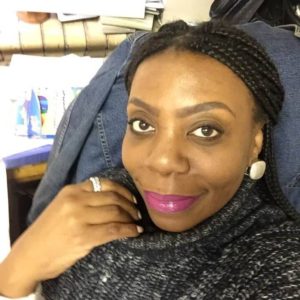


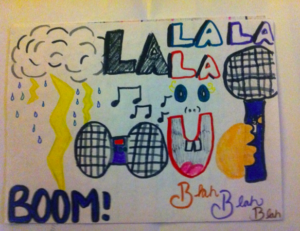
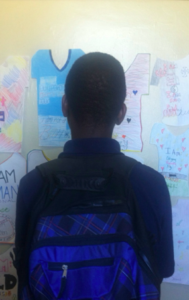 .
. 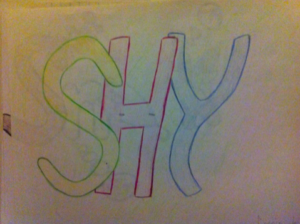
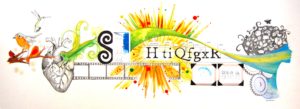
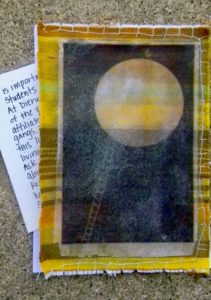
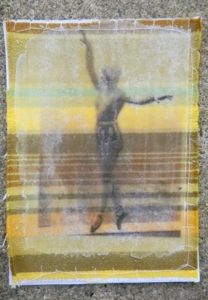
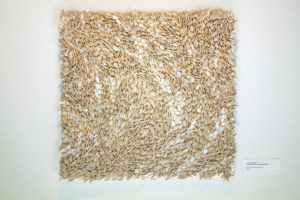

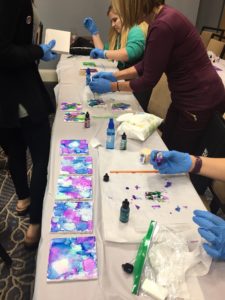


 D5 Creation
D5 Creation